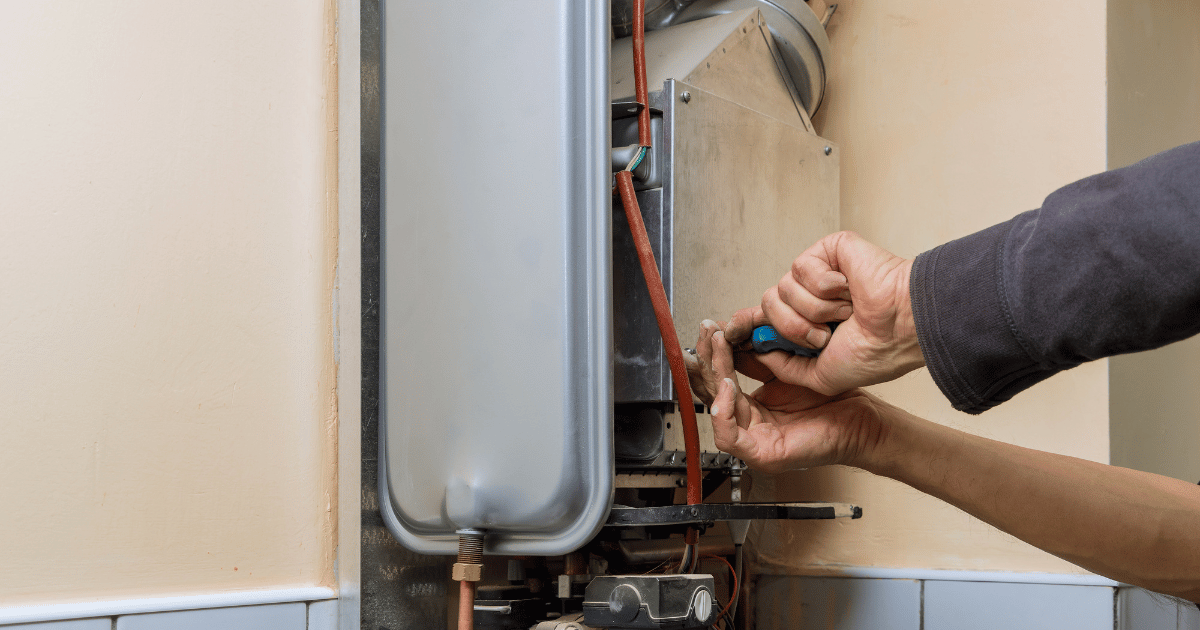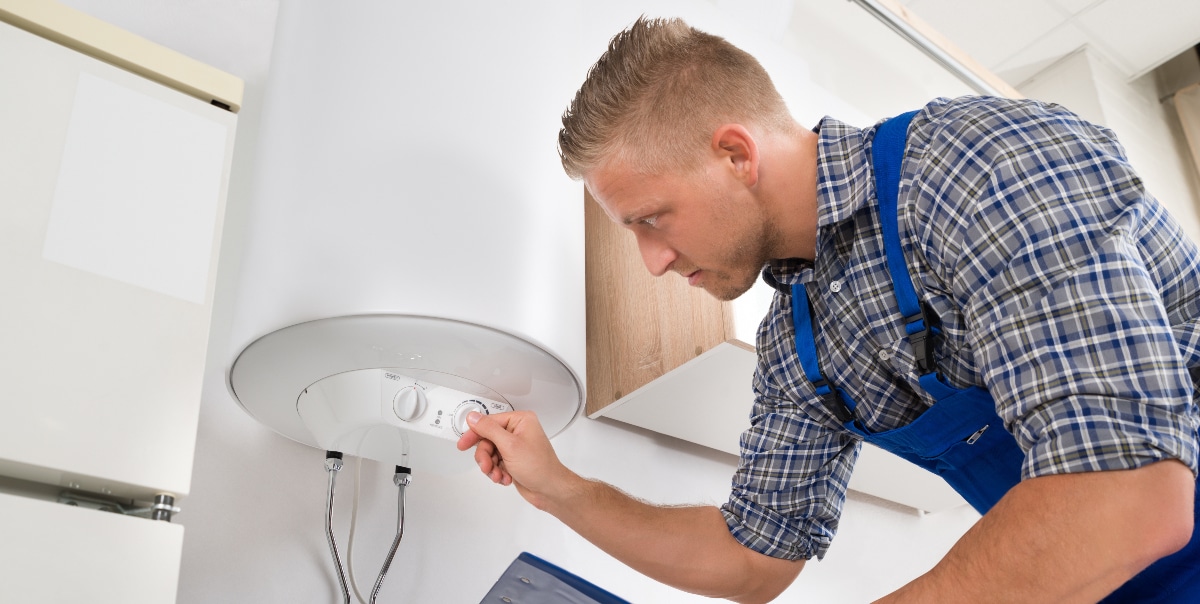Steps to Effectively Maintain Your Home's Hot Water SystemKey Tips on Caring for Your Home's Hot Water SystemExpert Advice on Maintaining Your Home's Hot Water System
Steps to Effectively Maintain Your Home's Hot Water SystemKey Tips on Caring for Your Home's Hot Water SystemExpert Advice on Maintaining Your Home's Hot Water System
Blog Article
The article directly below in relation to Tips on Maintaining a Water Heater is truly captivating. You should keep reading.

Hot water is necessary for day-to-day comfort, whether it's for a rejuvenating shower or cleaning meals. To guarantee your warm water system runs successfully and lasts longer, routine upkeep is vital. This article offers functional pointers and insights on how to preserve your home's hot water system to prevent disturbances and expensive repair services.
Intro
Keeping your home's warm water system might seem challenging, however with a few simple steps, you can guarantee it runs efficiently for several years to come. This guide covers every little thing from recognizing your warm water system to do it yourself upkeep pointers and recognizing when to call in professional assistance.
Value of Preserving Your Hot Water System
Routine maintenance not only extends the life-span of your hot water system however also ensures it operates successfully. Disregarding upkeep can cause lowered performance, greater power expenses, and even early failing of the system.
Indications Your Warm Water System Demands Upkeep
Knowing when your hot water system requires interest can stop major problems. Watch out for signs such as irregular water temperature level, unusual noises from the heating system, or corroded water.
Flushing the Hot Water Heater
Flushing your hot water heater gets rid of sediment buildup, boosting effectiveness and prolonging its life.
Checking and Changing Anode Rods
Anode poles avoid corrosion inside the container. Examining and replacing them when broken is critical.
Facility Problems Requiring Specialist Assistance
Examples consist of significant leakages, electric issues, or if your water heater is continually underperforming.
Routine Specialist Maintenance Benefits
Specialist upkeep can consist of detailed examinations, tune-ups, and ensuring conformity with safety criteria.
Checking and Adjusting Temperature Level Settings
Readjusting the temperature setups ensures ideal performance and safety and security.
DIY Tips for Upkeep
You can carry out numerous maintenance jobs on your own to keep your hot water system in top problem.
Checking for Leakages
Routinely check pipes and connections for leaks, as these can cause water damages and higher expenses.
Recognizing Your Hot Water System
Before diving right into maintenance tasks, it's handy to understand the fundamental parts of your hot water system. Usually, this consists of the water heater itself, pipelines, anode rods, and temperature level controls.
Month-to-month Maintenance Tasks
Routine regular monthly checks can aid capture minor problems prior to they rise.
Evaluating Pressure Alleviation Valves
Examining the pressure safety valve ensures it functions properly and protects against too much pressure buildup.
Protecting Pipelines
Insulating hot water pipes minimizes warmth loss and can conserve power.
When to Call a Professional
While DIY upkeep is beneficial, some issues need expert know-how.
Verdict
Normal maintenance of your home's hot water system is necessary for performance, long life, and price financial savings. By adhering to these tips and knowing when to seek expert assistance, you can make sure a trustworthy supply of warm water without unanticipated disturbances.
Water Heater Maintenance: The Basics
Maintaining your water heater will ensure it operates efficiently and has a longer lifespan. Neglecting regular maintenance can lead to costly repairs and an even bigger chunk of your savings if you have to replace it sooner than necessary. But there’s good news: Most water heater maintenance tasks are relatively simple and easy for homeowners with basic DIY skills.
Flush the Water Heater
Over time, sediment and minerals can build up in the tank, reducing its efficiency and potentially causing damage. To flush the tank, turn off the power or gas supply, attach a hose to the drain valve near the bottom and open the valve to drain the water until it runs clear. Ideally, flush the tank annually.
Replace the Anode Rod
The anode rod is a sacrificial metal rod that helps prevent corrosion inside the tank. Inspect and replace it every three to five years or per the manufacturer's recommendation. To replace the anode rod, turn off the power or gas supply, drain a few gallons of water from the tank, unscrew the old rod and replace it with a new one. If the anode rod is significantly corroded or covered in calcium buildup, it's a sign the water heater may need to be replaced soon.
Tune-Up
A yearly tune-up can help identify potential issues and ensure your water heater operates at peak efficiency. This typically involves checking the thermostat, burner assembly (for gas heaters) and any other components specified by the manufacturer. During a tune-up, the technician may also clean the burner and adjust the pilot light (for gas heaters) or examine the heating elements (for electric heaters).
How to Maintain Your Water Heater
Insulate the tank. Insulating the tank can improve energy efficiency and reduce heat loss, saving you money on energy bills. You can purchase precut insulation blankets designed specifically for water heaters or use standard fiberglass insulation wrapped securely around the tank. Check the temperature. The recommended water temperature for most households is around 120 degrees Fahrenheit (49 degrees Celsius). Higher temperatures can increase energy costs and potentially cause scalding. Use a kitchen thermometer to check the temperature at the faucet nearest the water heater. Monitor water pressure. Excessive water pressure can strain the water heater and cause leaks or even tank failure. Install a pressure-reducing valve if necessary. The ideal water pressure range is between 60 and 70 PSI (pounds per square inch). Test the temperature and pressure (T&P) relief valve. The T&P relief valve is a safety feature that releases pressure if the tank gets too hot or the pressure builds up too high. Test it annually by lifting the lever and allowing a small amount of water to release. Replace the valve if it doesn't release water or reseal properly. Check for leaks. Regularly inspect the tank, pipes and fittings for leaks or corrosion. Deal with issues promptly to prevent further damage. Even a small leak can lead to significant water damage over time. Consider a tankless water heater. If your traditional tank-style water heater is nearing the end of its lifespan ( typically 10 years), consider replacing it with a tankless water heater. These units heat water on demand, reducing standby energy losses and potentially saving you money on your energy bills. Schedule professional maintenance. While homeowners can perform many water heater maintenance tasks, it's still a good idea to schedule professional maintenance every few years. A plumber or HVAC technician can thoroughly inspect the unit, identify potential issues and ensure it operates safely and efficiently. https://www.homeserve.com/en-us/blog/home-improvement/hot-water-heater-maintanence/

We were brought to that write-up on What Kind of Maintenance Do Water Heaters Need? through an acquaintance on our other website. If you please take a moment to share this blog if you enjoyed reading it. Thanks for your time. Return soon.
Click For More Info Report this page